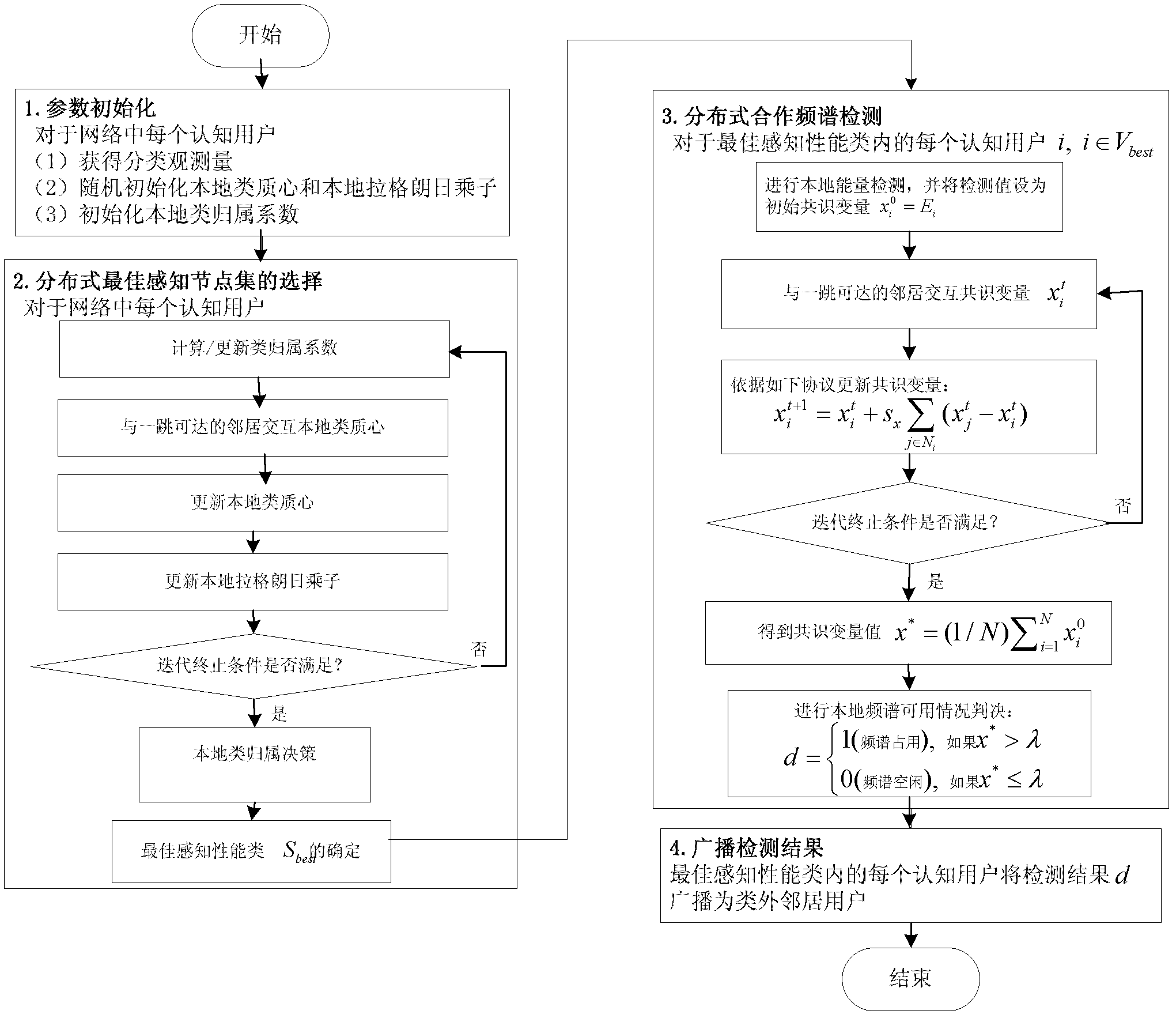Non-supervision clustering-based distributed cooperative spectrum sensing method for cognitive self-organizing network
An unsupervised clustering, self-organizing network technology, applied in the field of cognitive radio, can solve the problems of difficulty in distributed cooperation and high cost of cooperation in the whole network.
- Summary
- Abstract
- Description
- Claims
- Application Information
AI Technical Summary
Problems solved by technology
Method used
Image
Examples
Embodiment
[0127] Embodiment: A specific embodiment of the present invention is described as follows, and system simulation adopts Matlab software, and parameter setting does not affect generality. In the following embodiments, the basic reference object is to detect whether a certain channel in the VHF / UHF frequency band is idle, and mainly determine whether there is a PU signal on the channel through energy detection. It is worth emphasizing that the solution proposed by the invention is also suitable for detecting signals in other frequency bands.
[0128] N in this example f Take it as 100. The sensing bandwidth W is taken as 10 MHz, and the sensing time is 100 μs. The noise power spectral density is N 0 =-174dBm, the receiver noise figure is 11dB. The transmit power of the PU is set to 100mW. The path loss factor is 4, the standard deviation of shadow fading is 5.5dB, and the mean value of multipath fading is 1.
[0129] Such as image 3 As shown in (a), in this embodiment, w...
PUM
 Login to View More
Login to View More Abstract
Description
Claims
Application Information
 Login to View More
Login to View More - R&D
- Intellectual Property
- Life Sciences
- Materials
- Tech Scout
- Unparalleled Data Quality
- Higher Quality Content
- 60% Fewer Hallucinations
Browse by: Latest US Patents, China's latest patents, Technical Efficacy Thesaurus, Application Domain, Technology Topic, Popular Technical Reports.
© 2025 PatSnap. All rights reserved.Legal|Privacy policy|Modern Slavery Act Transparency Statement|Sitemap|About US| Contact US: help@patsnap.com



